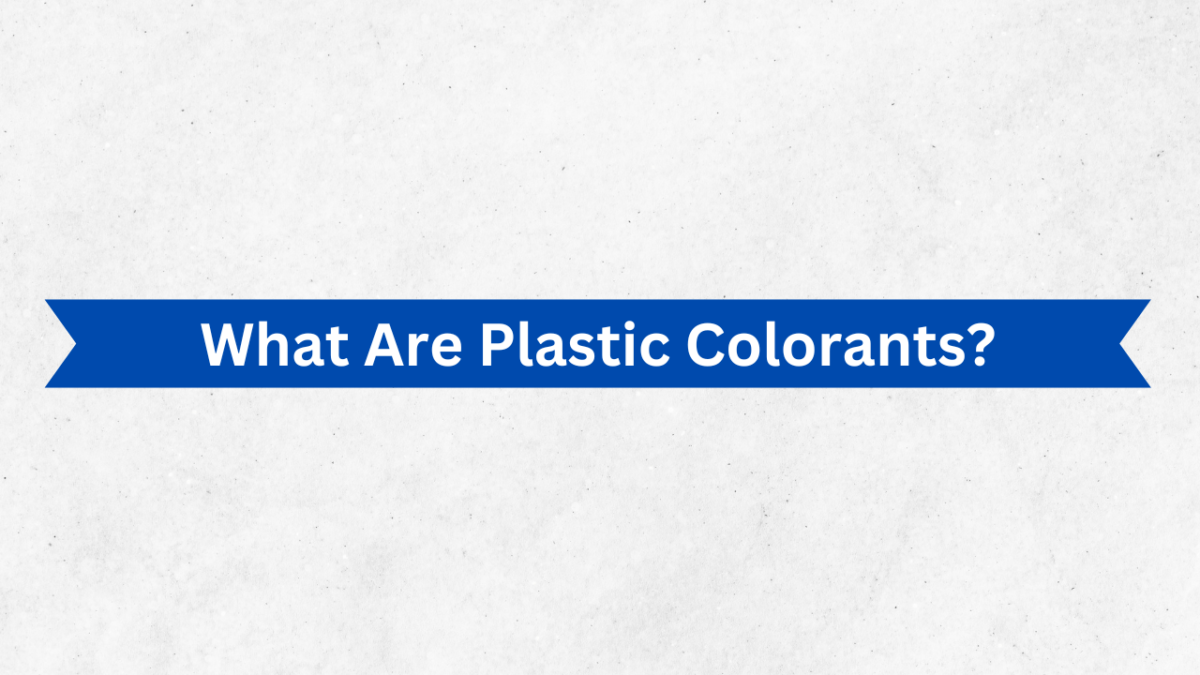Plastic colorants, or plastic dyes, are chemical compounds that color various plastic products. These compounds are dyes and pigments that produce multiple colors and hues more efficiently.
In plastic colorants, the type of colorant is determined based on the polymeric resin used to color plastic products. This blog will cover everything you need to know about plastic colorants, also known as plastic dyes, for your business.
Appearance is the first impression when purchasing a product. Plastics achieve their unique appearance when choosing the right food colors, making them visually appealing and distinct.
Various colors can help plastic manufacturers differentiate their products in an overcrowded market. Color can make a lasting impression on consumers in several ways, including packaging, automotive components, and even packaging for consumer goods.
Polystyrene, polycarbonate, and acrylic polymers are generally used to formulate plastic colorants for dyes. Pigments work best with polyolefins when used in colorant applications. Plastic colorants are generally used to knead colorants into plastics to achieve a desired color.
If you’re still wondering about the various applications of plastic colorants, their roles, applications, and types, then this blog is for you.
Understanding Plastic Colorants
As previously discussed, plastic colorants are dyes or colorants used to incorporate color into plastics, efficiently providing them with a more appealing, attractive, and vibrant appearance.
Plastic colorants are most commonly used in plastics manufacturing and serve as a transformative force, transforming dull, monochromatic materials into highly appealing, vibrant, and eye-catching products.
Additionally, plastic colorants are certified synthetic colors or dyes widely used in various industries, including textiles, plastics, pharmaceuticals, etc.
Type of Colorants
There are various types of colorants, including but not limited to “masterbatches,” “colored pellets/colored compounds,” “liquid masterbatches/paste colors,” and “dry colors.“ The process involves mixing natural pellets (plastic particles) with coloring materials and molding the mixture. Let’s explore them in detail:
- Masterbatches and Surface Coating of Plastic Colorants
The delivery of plastic colorants in plastic molding can be done in various ways, including masterbatches (concentrates), which are prepared by separating the focus from the resin, cube blends (“salt & pepper mixes” – dry blending), which are natural polymers sprayed into surface coatings, pre-colored resins, and natural polymers, which make manufacturing cheaper by using pre-colored materials.
When pigment powder (or dye) is mixed with additives and a carrier, it is done in a specific way and with equipment. Pigments have various applications, spanning multiple areas, including cosmetics, pharmaceuticals, plastics, and skin care products.
A pigment powder’s molecules are fully merged with the molecules of the carrier resin after they have been heated, plasticized, stirred, and sheared. As a result, pigment particles of similar size to resin particles are created in a predefined, standardized manner.
- Plastic Colorants: Environmental Considerations
Plastic colorants are widely used in various industrial applications, including adding colors to plastics, food packaging, and surface coatings. Most molders formulate plastic colorants using masterbatches, which include concentrated pigments dispersed in polymer carriers.
Therefore, mixing the masterbatch with natural resin at a predetermined ratio is essential to achieve the desired color during the molding process. The sustainability movement has prompted manufacturers to explore eco-friendly colorants that minimize environmental damage.
Adding these additives can recycle plastic products, reducing their environmental impact and carbon footprint. Incorporating sustainable colorants into plastics manufacturing contributes to a more environmentally conscious and responsible approach.
- Dry Color
It is a powdered colorant made by combining pigments with metal soap. Despite its low cost, it does not require much effort to manufacture. However, it could have been handled better, as it splatters easily, stains easily, and makes it difficult to measure accurately.
- Paste Color Liquid Masterbatches
This powdered colorant is mainly produced by mixing pigments and metal soaps. It is affordable and requires less effort to produce. However, several challenges associated with handling it include being easily splattered, staining equipment, and being difficult to measure accurately.
- Masterbatches Manufacturing Process
In Japan, masterbatches are the primary coloring agent because they are balanced and easy to manufacture with relatively little equipment. These masterbatches can be further customized to feature a variety of colors and functions, incorporating pigments, colorants, and functional materials into resin pellets.
Premium Quality Colorants we produce at Hridhan Chem
At Hridhan Chem Pvt. Ltd., we understand that these additives are far more than mere enhancements; they are essential elements that define plastic goods’ visual identity, functionality, and market appeal.
We offer a comprehensive range of high-quality plastic colorants and pigments that enable manufacturers across industries to meet technical requirements, engage consumers, and meet consumer expectations. We are committed to producing and supplying innovative, sustainable colorants that showcase quality and precision, helping you gain a competitive edge in plastics manufacturing.
Hridhan Chem Pvt. Ltd. is more than just a manufacturer and supplier of custom plastic colorants; it also produces a variety of dyes, colorants, and pigments used in foods, cosmetics, pharmaceuticals, home and personal care, and plastic products. We are here to stand out in your plastic manufacturing business in a crowded market.
Our collective mission is to shape a world where plastics are admired and perform as well as possible. For more information on our comprehensive range of plastic colorants and pigments produced at our manufacturing facilities, don’t hesitate to contact us today.




